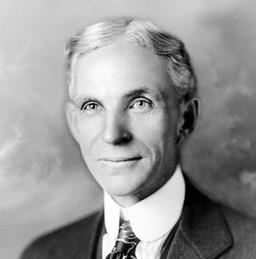50 Quotes
"Facebook’s cofounder and CEO is drawing a bright line between social graphs and interest graphs."
— Anthony Bardaro
Instagram and the interest graph"This gets at why Instagram is so valuable: as I’ve noted in the context of Twitter, the interest graph is even more valuable than the social graph, but it is harder to build."
— Anthony Bardaro
Instagram and the interest graph"Part of why a killer app for the interest graph has been so elusive is because of how easy the open web’s many layers of abstraction make it to game-the-system. Juxtapose that with Instagram’s wholly owned and operated walled-garden, which engenders higher-efficacy signals about user interests thanks to first party data and quality control."
— Anthony Bardaro
Instagram and the interest graph"With a social graph, you can derive a lot of signal from just looking at users’ first party interactions right there on the platform."
— Anthony Bardaro
Instagram and the interest graph"In contrast, you’re dependent on far more approximation when it comes to an interest graph."
— Anthony Bardaro
Instagram and the interest graph"As of 2018, the interest graph seems to have been more of an app killer than a killer app."
— Anthony Bardaro
Instagram and the interest graph"Engagement on IG occurs almost entirely on-platform and generates almost all first-party data."
— Anthony Bardaro
Instagram and the interest graph"to preserve the sanctity of those spaces, Instagram only populates the main feed with content from people you follow directly, plus it doesn’t let users repost into their friends’ feeds."
— Anthony Bardaro
Instagram and the interest graph"Instagram itself still faces aforementioned technical challenges in translating data from visual content into interests."
— Anthony Bardaro
Instagram and the interest graph"algorithmic curation in IG’s “Explore” tab is another work-in-progress."
— Anthony Bardaro
Instagram and the interest graph"users themselves have always had latitudes for gaming-the-system via comments and hashtags."
— Anthony Bardaro
Instagram and the interest graph"the incentives and misincentives of ad-based monetization are part-in-parcel."
— Anthony Bardaro
Instagram and the interest graph"photos do lend rather naturally to consumer and entertainment info;"
— Anthony Bardaro
Instagram and the interest graph"Instagram can start to inhibit the propagation of undesirable information on its platform by re-focusing on and delving deeper into its entertainment niche — for which clickable links serve no purpose."
— Anthony Bardaro
Instagram and the interest graph"few people open Facebook with the intent of getting informed — or misinformed for that matter."
— Anthony Bardaro
Instagram and the interest graph"Zuckerberg actually talked about the need to segregate user-generated content from organic brand interactions in order to preserve the app’s singular focus on person-to-person comms:"
— Anthony Bardaro
Instagram and the interest graph"There were no businesses in the ecosystem. And a lot of people were telling us go put better ads in. And that felt wrong."
— Anthony Bardaro
Instagram and the interest graph"what we did was we built Pages, which was a way for businesses to interact for free in the system and start creating organic interactions between people and businesses so we could figure out what the people using Facebook wanted from businesses within Facebook."
— Anthony Bardaro
Instagram and the interest graph"Zuckerberg was intent on separating users and brands as a solution to a UX problem."
— Anthony Bardaro
Instagram and the interest graph"Few people open Instagram with the intent of getting informed; people open Instagram with the intent of getting entertained; and Instagram should predominantly aim to entertain them."
— Anthony Bardaro
Instagram and the interest graph"the point is that “navigable URL links” are a fruitless trial, because it doesn’t fit Instagram’s vision or value proposition as the first killer app for the interest graph."
— Anthony Bardaro
Instagram and the interest graph"Retreating from that frontier back to the safety of Facebook Core’s fat-and-happy social graph will leave the interest graph opportunity wide-open for new entrants who have less baggage to lose in blazing new, adventurous trails"
— Anthony Bardaro
Instagram and the interest graph"Value is tied to scarcity, and scarcity on social networks derives from proof of work. Status isn’t worth much if there’s no skill and effort required to mine it [and, ultimately,] competition for relative status still motivates humans… What matters is less our absolute status than how are we doing compared to those around us…"
— Anthony Bardaro
A market for social capital: The theory and application of Status as a Service"The curation algorithm must foster a meritocracy by rewarding quality, not an oligarchy by entrenching quantity:"
— Anthony Bardaro
A market for social capital: The theory and application of Status as a Service"Overindexing to the latter — those grandfathered-in to high society thanks to legacy — can spark a downward spiral in quality, scarcity, and value."
— Anthony Bardaro
A market for social capital: The theory and application of Status as a Service"The network must provoke users with a competition for social status:"
— Anthony Bardaro
A market for social capital: The theory and application of Status as a Service"Wei actually implies that more discreet measures like Facebook’s News Feed algorithm can be sufficient to trigger the desired competition"
— Anthony Bardaro
A market for social capital: The theory and application of Status as a Service"the more visible the social capital, the better’ for scaling a network, but he later adds the caveat that sustainable networks are built on the back of the utility axis, as opposed to the social capital axis, of a network’s 2x2 matrix"
— Anthony Bardaro
A market for social capital: The theory and application of Status as a Service"utility is hard to create, but it’s longer-lasting and impossible to overserve"
— Anthony Bardaro
A market for social capital: The theory and application of Status as a Service"so, better to focus on the former for a long"
— Anthony Bardaro
A market for social capital: The theory and application of Status as a Service"In fact, it’s usually the most high status or desirable people who leave first, the evaporative cooling effect of social networks."
— Anthony Bardaro
A market for social capital: The theory and application of Status as a Service"At that point, that product or service better have moved as far out as possible on the utility axis or the velocity of churn can cause a nose bleed"
— Anthony Bardaro
A market for social capital: The theory and application of Status as a Service"the more public/visible/transparent the social measuring stick, the more likely it will have a corrosive effect on the network due to unintended consequences like users gaming-the-system."
— Anthony Bardaro
A market for social capital: The theory and application of Status as a Service"Goodhart’s Law… observes that, when a measure becomes a target, it ceases to be a good measure… Radical transparency and predictable consistency enable gaming-the-system."
— Anthony Bardaro
A market for social capital: The theory and application of Status as a Service"Even were that measuring stick to adequately express meritocratic quality, like a strong-form interest graph, it would still likely have a reflexive, Pavlovian effect on behavior."
— Anthony Bardaro
A market for social capital: The theory and application of Status as a Service"Part of why a killer app for the interest graph has been so elusive is because of how easy the open web’s many layers of abstraction make it to game-the-system."
— Anthony Bardaro
A market for social capital: The theory and application of Status as a Service"The point is for entrepreneurs and business strategists to recognize that overindexing to social currency as a means or an end can build a castle made of sand — regardless of whether it’s the right kind (meritocratic quality) or the wrong kind (oligarchic quantity)."
— Anthony Bardaro
A market for social capital: The theory and application of Status as a Service"To wit, most social networks quickly reach their TAM, because the art and skill of content creation caps the supply side’s upper limit,"
— Anthony Bardaro
A market for social capital: The theory and application of Status as a Service"Every network has some ceiling on its ultimate number of contributors, and it is often a direct function of its proof of work"
— Anthony Bardaro
A market for social capital: The theory and application of Status as a Service"but even after that supply shock, consumers still out-man producers by a huge margin, per the 1% Rule (aka 1/9/90 Rule):"
— Anthony Bardaro
A market for social capital: The theory and application of Status as a Service"only 1% of the users of a website actively create new content, while the other 99% of the participants only lurk"
— Anthony Bardaro
A market for social capital: The theory and application of Status as a Service"wiki, 90% of the participants of a community only view content, 9% of the participants edit content, and 1% of the participants actively create new content."
— Anthony Bardaro
A market for social capital: The theory and application of Status as a Service"You might wonder, how did Facebook differentiate itself from MySpace? It started out as mostly a bunch of text status updates, nothing necessarily that innovative."
— Anthony Bardaro
A market for social capital: The theory and application of Status as a Service"there was a second value proposition that Facebook offered: social filtration. Let’s call these two, social facilitation and social filtration,"
— Anthony Bardaro
A market for social capital: The theory and application of Status as a Service"one entry strategy for the disruptor is to come into the industry, bring the casserole to the dinner, come into the house, sit down at the table, be polite, eat, and grow like you’re a baby elephant… you’re growing bigger and bigger and bigger and before you know it you can’t be kicked out of the house. That was my paraphrasing of how you describe the Netflix strategy… And by the way, I did the same thing with Expedia."
— Anthony Bardaro
A market for social capital: The theory and application of Status as a ServiceExplore More Quotes 📚
Want to Save Quotes?
Glasp is a social web highlighter that people can highlight and organize quotes and thoughts from the web, and access other like-minded people’s learning.

















